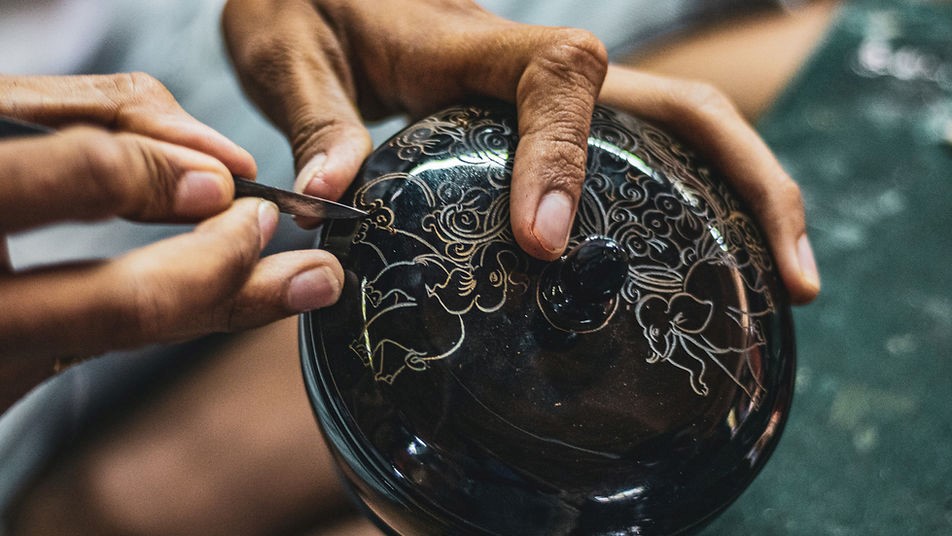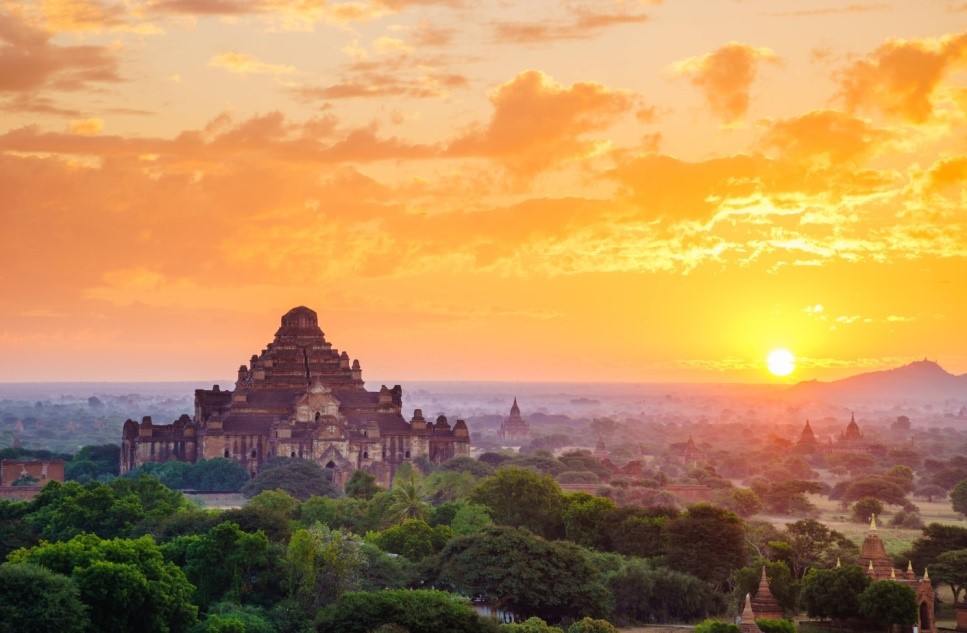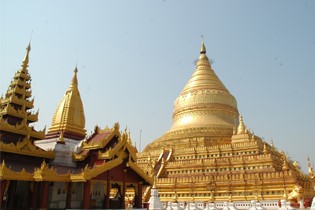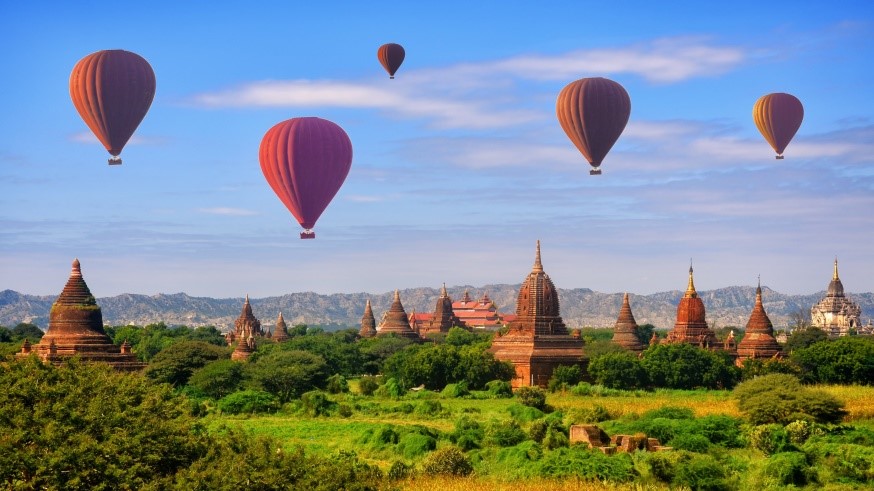Bagan Cultural Heritage is central to the preservation of Bagan. UNESCO attributed intangible attributes to the decision to grant Bagan status as a World Heritage Site in 2019, earmarking the importance of Bagan as a place of ‘Buddhist worship and merit-making activities, traditional cultural practices and farming.’ UNESCO also noted the ‘continuing intangible heritage and cultural practices,’ as a key element in the cultural integrity of Bagan and it is these practices that link the ancient capital of the Bagan Kingdom to the important cultural city that exists today.
One of these industries that date back to peak of the Bagan Kingdom in the 12th to 13th centuries is the art of Bagan Lacquerware. The lacquerware which possesses a unique shine due to the resin being taken from the local Thit-si tree, is produced using the same techniques dating back to the 12th century. With the method of production protected as a traditional cultural expression, the unique method of production which involves handmade decoration and extensive polishing to finalize the unique shine of the products, artisans are able to commercially benefit from the craftwork and able to pass down the techniques, ensuring its survival.

Bagan, a Centre for Cultural Heritage and Geographical Indications?
Development of a sui generis system for geographical indication protection Myanmar is currently proposal, with products and their geographical indication currently protected under the Trademark law. One of the famed products of the region which would potentially be one of the first geographical indications registered would be pon yay gyi, a fermented bean paste made from horse gram beans. With the product being shipped to the rest of the country, Bagan serves as the geographical center for pon yay gyi production as it was here where the product was first founded and where the horse gram beans are able to grow. Horse gram beans were first grown in Bagan as they are notoriously a drought-tolerant crop, an important attribute for a crop in a region infamous for receiving very little rainfall.

Palm wine, referred to as toddy in Myanmar in another potential product of Bagan that attracts tourists through its uniqueness and individuality, and also one that could benefit in the future from geographical indication protection. Visitors can visit toddy farms in Bagan and witness farmers scaling the tall coconut palm trees using makeshift bamboo ladders (referred to as yin) while tapping the tress to extract palm sap. Fermenting the sap results in an alcoholic palm wine that can be enjoyed by visitors.
The two food products that attribute their geographic locality to Bagan serve as tourist attractions but they also provide insight into the cultural heritage of the region, providing some understanding as to the reasons why such products emerged as staples in Bagan. Their production also exhibits extensive traditional knowledge, with centuries of practice and tradition contributing to the evolving production methods of these products.
Supporting Sustainable Tourism and Indigenous Communities through Tourism
Bagan, the land of temples and pagodas, exists thanks to the resilience of its communities. Despite being a land prone to drought, natural disaster and a land that has had to withstand the downfall of an empire, Bagan remodeled itself into a human settlement and a pilgrimage destination and today, a tourist destination, thanks to the strength and uniqueness of its communities.
Promotion and protection of Bagan’s cultural heritage plays a central role towards the future of its communities and can meaningfully contribute to Bagan’s importance as a tourist destination. The Buddhist tradition of ‘merit-making’ has been identified by UNESCO as an ‘exceptional and continuing testimony’ which has allowed for the remarkable number of surviving stupas, temples and monasteries to remain, thanks to the continuing cultural traditions and activities which reward good merit.

Apart from preservation and restoration of the temples as part of the cultural practice of merit-making, other cultural practices such as donation of flowers, incense, candles and food to Bagan’s numerous temples and pagodas as well as annual pagoda festivals all serve to provide visitors with a sense of Bagan culture that has existed and been preserved since the 12th century. Intellectual property rights and the promotion of cultural expressions and traditional knowledge as a legal right will only serve to further increase the preservation of culture and contribute to the authenticity of the visitor experience in Bagan.

In May 2024, the World Intellectual Property Organization (WIPO) adopted the first treaty to address the interface between intellectual property, genetic resources and traditional knowledge to include provisions specifically for the benefit of Indigenous Peoples as well as local communities. The communities in Bagan would be an exemplary beneficiary of the adoption of such provisions within Myanmar as Bagan exists as a tourism destination due to the cultural heritage of its communities.
Bagan cultural heritage will only benefit and flourish further as it adopts model laws to benefit communities. As intellectual property protection expands within Myanmar and benefit-sharing prospers within Bagan, the preservation of the land of temples and pagodas will be hastened and the traditional way of life will be further preserved and encouraged for future generations.






